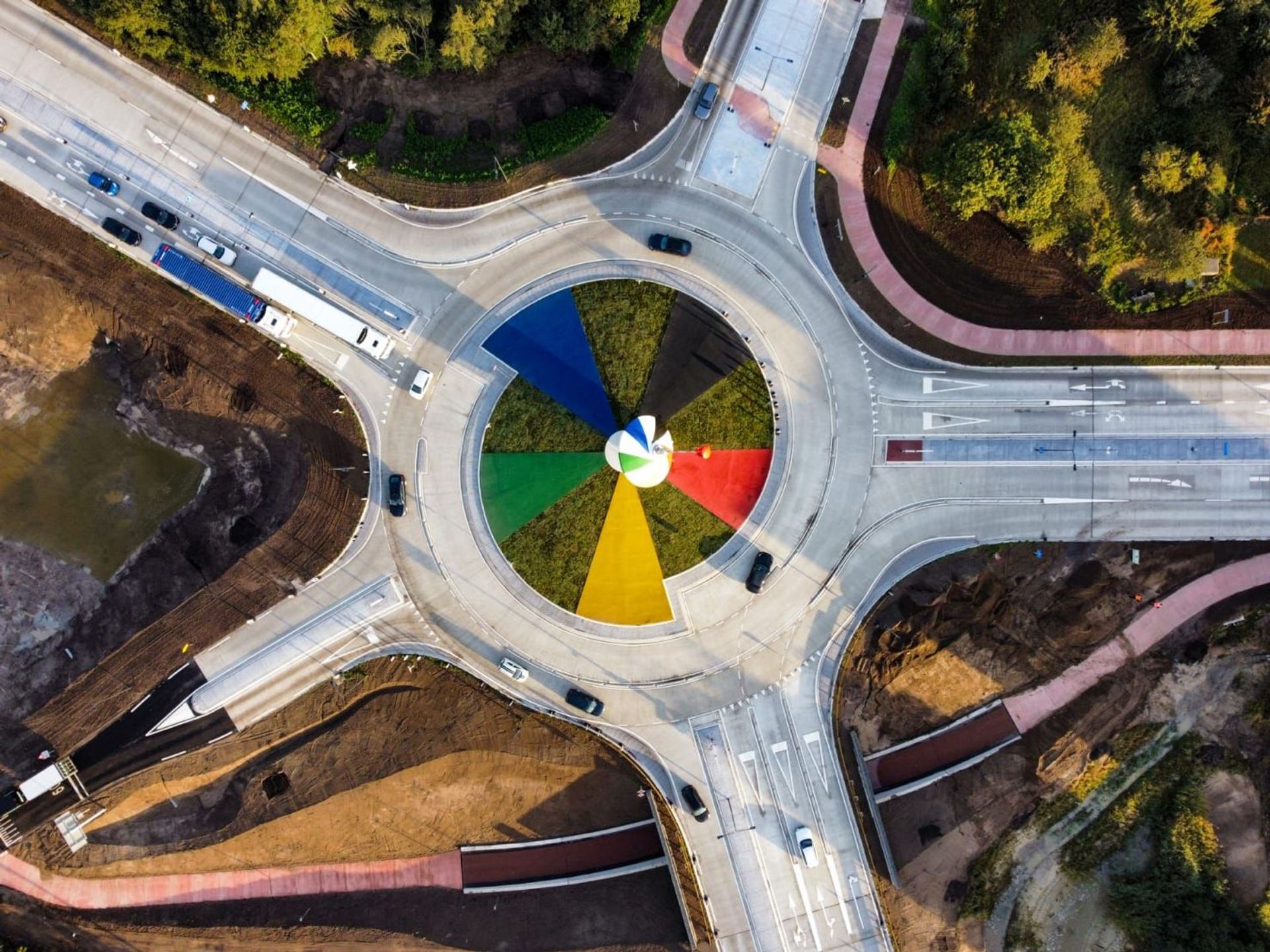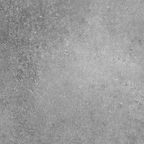

Road surfaces are increasingly made of concrete. Concrete is very resistant to heavy and intensive traffic loads and remains excellent for driving on. The occurrence of rutting and ridge formation is minimal. Concrete is virtually maintenance-free and is also recyclable.
Driving lanes
Paving is an important element of roundabouts. Wringing heavy traffic often leads to the destruction of the pavement. This can be prevented with a concrete pavement. A concrete pavement is a 'rigid' and stable construction that can withstand the test of time and heavy traffic without being damaged. Concrete is therefore a sustainable solution.
Concrete has a long life and is easy to maintain. Damage due to weather influences is virtually nil. Concrete also has an environmentally friendly character. The growth of weeds is minimal, making pesticides superfluous. We are able to carry out all concrete works with our own equipment. This allows us to guarantee quality and save costs
.
Roundabouts
Good traffic flow is important for several reasons. Accelerating and decelerating traffic leads to extra CO₂ emissions. In addition, a good traffic flow promotes road safety and therefore also the quality of life.
Roundabouts are used intensively and due to the increasing freight traffic and the associated axle loads, the load on the road surface is very high. Moreover, on a roundabout there is 'squeezing' traffic. The choice to use concrete on roundabouts is an obvious one, as it can withstand heavy loads. Maintenance work is minimal, which increases the roundabout's availability to traffic.
Roundabouts are realized in various forms in the Netherlands, for example single lane, mini roundabouts, roundabouts that can be driven over and turbo roundabouts. All types are available in concrete, regardless of the dimensions. This applies not only to the road surface, but also to roundabout tires or blocks, drainage gutters, (rattle) strips that can be driven over and the connecting roads.
There are generally three types of constructions at roundabouts:
- unreinforced concrete; this construction is recommended for light traffic loads
- unreinforced concrete with dented joints; recommended for roundabouts with a lot of light traffic, for example in heavy urban traffic
- (continuous) reinforced concrete; for (very) heavy traffic loads, for example when opening up business parks
Cycle paths
Paths are regularly constructed in the outlying area to provide access to an agricultural company, plot or recreation area. Concrete also offers many advantages here.
Cycle paths, agricultural roads and plot paths can be realized both mechanically and manually in reinforced and unreinforced versions. Most concrete paths are mechanically laid on site. It is also possible to design concrete paths in a specific colour. The choice is increasingly made for the use of 'through-and-through' colored concrete, where the concrete used to be 'strewn in'.
The advantages of concrete paths are:
- flat yet non-slip surface
- minimal maintenance costs
- can be installed both mechanically and manually
- high comfort for the user
- no damage due to root pressure from trees next to the path
Knowing more? Please contact Bart Couwenberg: b.couwenberg@denoudengroep.com



Line constructions
Pavements are often enclosed to prevent damage and loose paving elements.
Various types of linear constructions (edge enclosures) are possible here.
It is important that when installing the linear constructions, the drainage of the rainwater is immediately installed in a good manner. In this case, the edging is combined with the construction of a gutter construction.
Examples of linear constructions (whether or not combined with drainage gutters) are:
- Roundabout tires
- Lace closuresVehicle barriers
With machine processing, arc radii from approximately 4 meters can be applied. Fitting pieces and other connections can be realized manually.
The service life of line constructions and vehicle barriers is at least 30 years. Virtually no maintenance work is required.
Roadside concrete
Almost all roads in the Netherlands are used intensively. Every municipality is aware of the problem of too narrow country roads and that vehicles have to pass each other using the verges. This creates potholes and puddles along the roads, but also holes and cracks in the edges of the pavement. This causes life-threatening situations and a lot of extra maintenance.
We can offer a solution by installing a concrete pavement in the existing verge. Concrete is very suitable for protecting the edges of the asphalt road. It seals the asphalt layer so that it can no longer be damaged at the edges.
Rainwater drainage can be promoted by choosing the shape of the verge concrete. The top of the verge concrete can be profiled, so that the road user receives a signal to stay within the road section. The verge concrete has a long service life and limits the maintenance of the road surface.
The verge concrete construction can be adapted to any situation.
Knowing more? Please contact Bart Couwenberg: b.couwenberg@denoudengroep.com



- Nederlands
- English
- Deutsch
- Francais